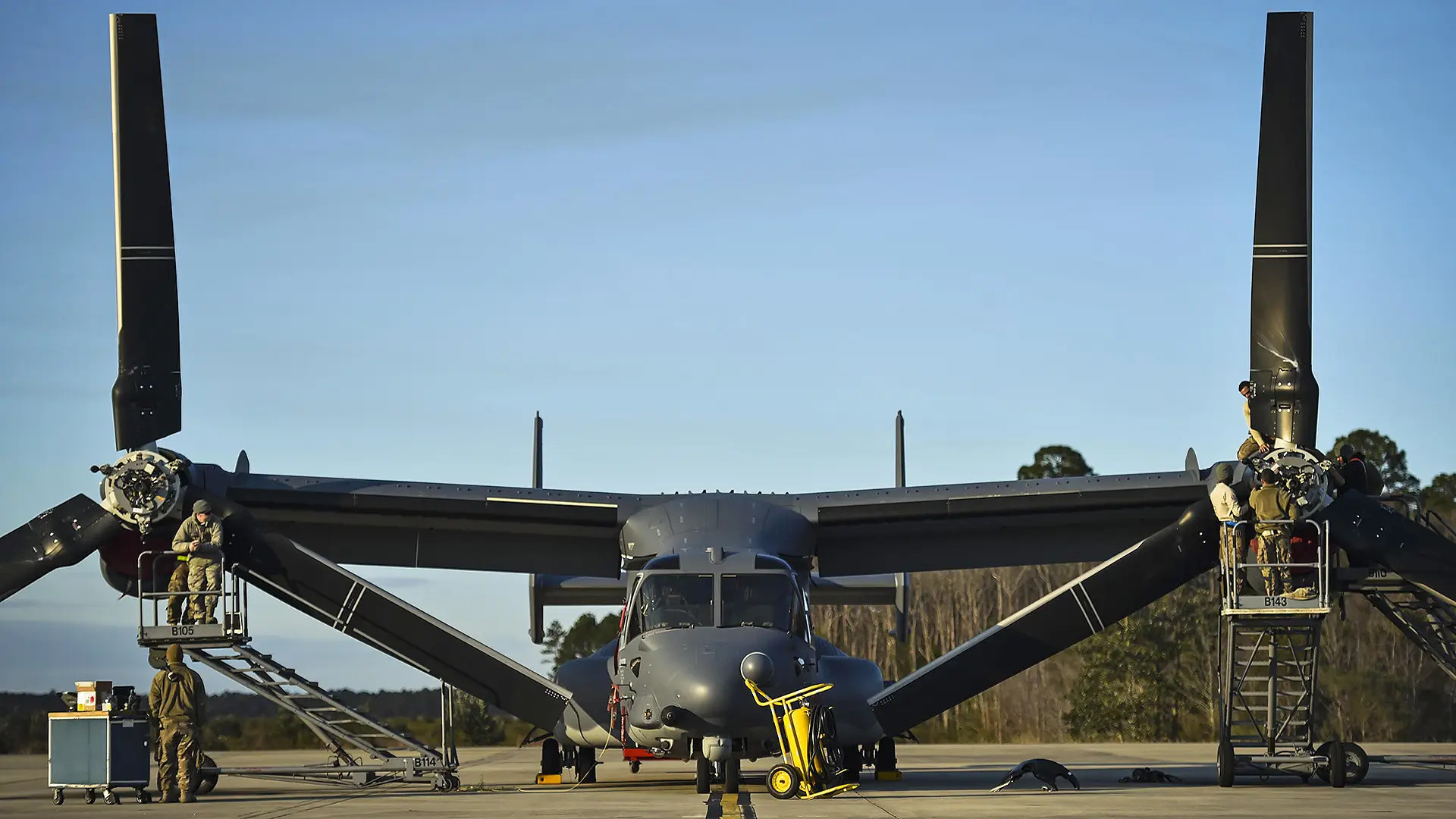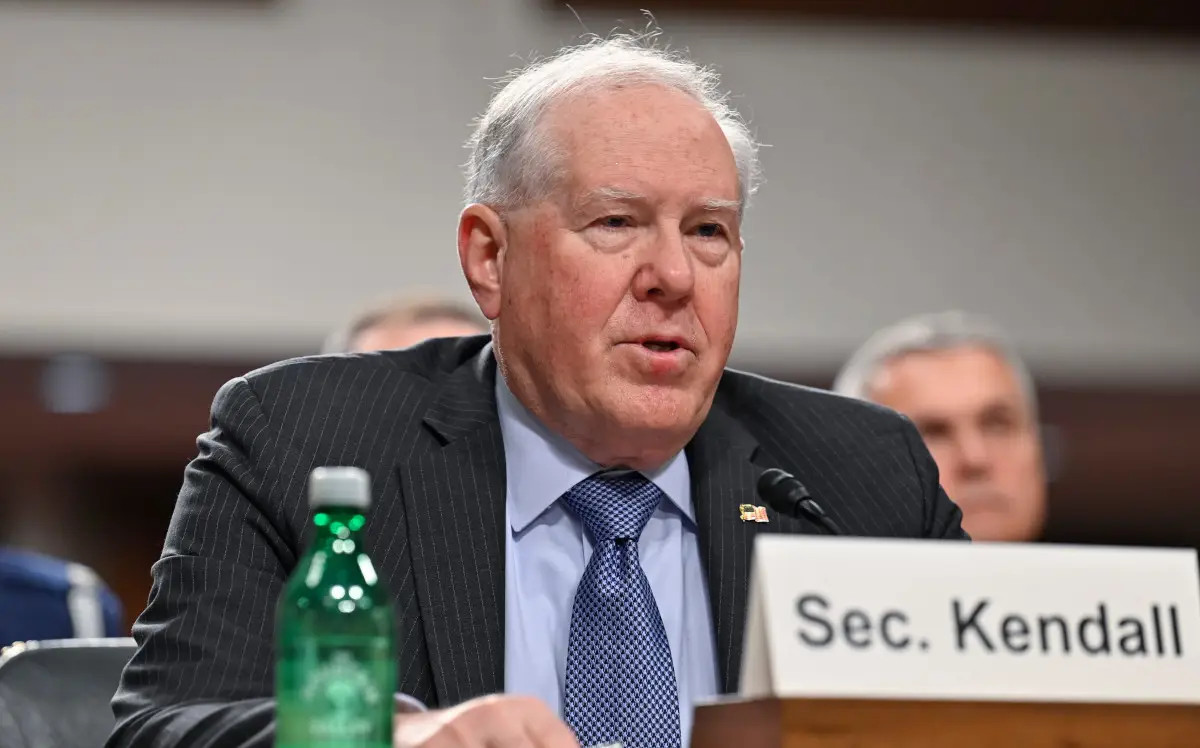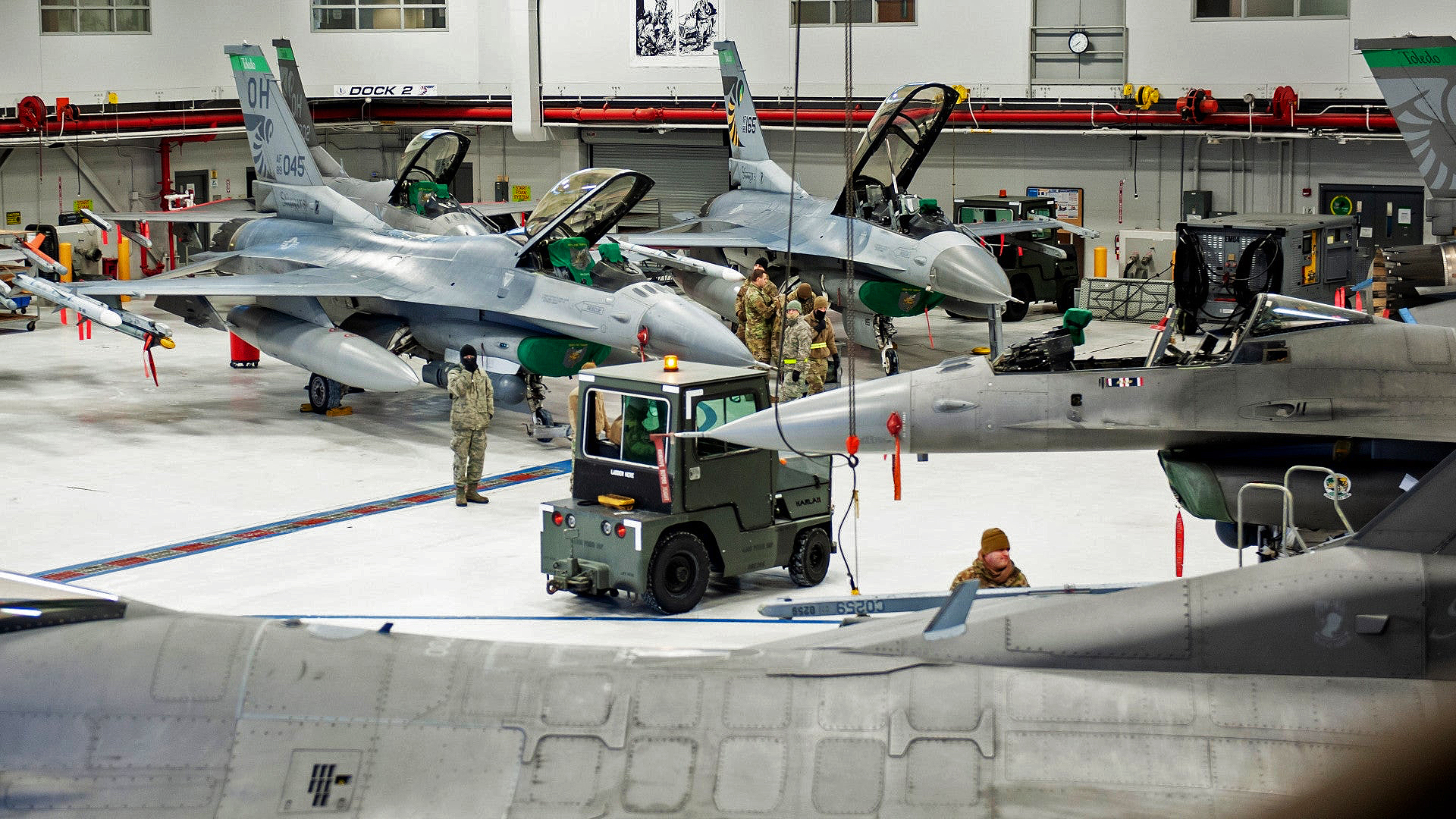The U.S. Air Force says hundreds of its aircraft are at risk of being left grounded due to a lack of spare parts if it doesn’t get an additional $1.5 billion on top of its latest budget request. F-16C/D Viper and F-15E Strike Eagle tactical jets, B-52 bombers, and KC-135 tankers, are among the types that would be impacted.
The service left these spares out of its proposed Fiscal Year 2025 budget, which is capped by law, to help preserve funding for other priority programs, including future aircraft. At the same time, underfunding the purchase of replacement parts for the shrinking fleet of aircraft it already has seems like a highly questionable strategy that could present serious risks, especially if a major conflict were to break out.
The $1.5 billion for additional spare parts was the single largest item in the Air Force’s Unfunded Priorities List (UPL) for the 2025 Fiscal Year. The Air Force, other branches of the U.S. military, and other elements of the Department of Defense are required by law to submit UPLs to Congress in addition to their annual budget proposals. These are wishlists for things that, for one reason or another, did not make it into the main budget request. The Pentagon’s overall 2025 Fiscal Year budget request is capped due to the Fiscal Responsibility Act of 2023.

“Our request for additional spares will help us shore up our defense industrial base and increase our aircraft availability. At any one time, we have up to 514 aircraft that are grounded due to lack of spare parts,” an Air Force spokesperson told The War Zone. “We can reduce that by 221 (43%) aircraft if this request is funded.”
The exact breakdown of the aircraft that would escape being grounded for a protracted period of time with this infusion of spare parts is unclear. The 514 and 221 aircraft figures do represent roughly 10 percent and four percent, respectively, of the Air Force’s current Total Aircraft Inventory (TAI), according to official data accompanying the service’s latest budget request. The TAI includes both fixed-wing types and helicopters.

Earlier this week, Defense News did publish a breakdown of the $1.5 billion in desired extra funding for spare parts by aircraft type, which is as follows:
- “$167 million for B-52H Stratofortress bombers.
- $564 million for F-16 Fighting Falcon jets.
- Nearly $61 million for F-15E Strike Eagle jets.
- Nearly $62 million for the HC-130J Combat King personnel recovery aircraft.
- $195 million for RC-135 intelligence aircraft.
- $7 million for C-130J Super Hercules cargo planes.
- Almost $450 million for the KC-135 Stratotanker aerial refueling plane.”
The Air Force subsequently confirmed to The War Zone that these figures are accurate.

The Air Force’s Fiscal Year 2025 UPL also includes a separate line item asking for $612 million to create “deployable Mission Generation Force Elements (MGFE) with existing personnel and fighter aircraft,” according to Air & Space Forces Magazine.
“This one-time requirement would provide the readiness spares packages, aviation support equipment, and munitions support equipment necessary to reorganize the fighter force structure to produce nine additional mission generation force elements which would make available up to 208 combat-coded fighter aircraft in the existing USAF inventory,” the UPL adds about the MGFE request, Defense One separately reported.
A lack of ready supplies of spare parts can have cascading operational and logistical impacts. More grounded aircraft can easily translate to higher demands on ones that are still flyable, which puts added strains on those airframes. It can also force other changes in operating tempo. Fewer available aircraft overall reduces the number of backups that can be utilized should the need suddenly arise, as well. In addition, the longer an aircraft remains grounded, the more effort it can take to get it flyable again due to various scheduled maintenance cycles and flight certification requirements. This is especially true if the non-flying aircraft are cannibalized for parts, which is often the case, making it all that much harder to get them back into the air at a later date.
Though not spare parts related, the three-month grounding of all V-22 Osprey tilt-rotors following a crash last November provides a prime example of how extended downtime for aircraft can lead to a host of significant readiness issues. After the grounding order was lifted earlier this month, the Air Force said that it would take weeks if not months for its CV-22 community to truly get back to where it was previously in terms of operational tempo. You can read more about the Osprey grounding and its impacts here.

The War Zone also previously explored in great detail how spare parts shortages have created problems for the F-35 Joint Strike Fighter program that are serious enough to present national security concerns. The F-35 program does have a number of unique factors that contribute to its spare parts backlog and related issues, as you can read more about in our past feature.

“The FY25 USAF Unfunded Priorities List (UPL) addresses areas where the Air Force would have applied additional funding had it been available, and where emerging analysis on Great Power Competition showed an area of need/or where the service can provide additional forces to Combatant Commanders,” the Air Force spokesperson told The War Zone in response to a query about why the $1.5 billion for spares was not included in the service’s Fiscal Year 2025 budget proposal.
The UPL itself says that “this option was partially funded during FY25, but the full requirement could not be resourced,” according to Air & Space Forces Magazine. “The fiscally constrained environment necessitated difficult decisions and it was not possible to fully fund key programs while still meeting other Air Force priorities.”
As already noted, the Fiscal Responsibility Act, or FRA, which Congress passed and President Joe Biden signed into law last year, imposed strict limits on defense spending across the board for the 2025 Fiscal Year.
“A large part of the Air Force budget goes to take care of the current force – MILPAY [military payroll], CIVPAY [civilian payroll], current readiness, etc, etc,” Secretary of the Air Force Frank Kendall told The War Zone and other outlets at a media roundtable ahead of the rollout of the service’s latest budget proposal earlier this month. “So we funded that to a level we thought was acceptable, which is essentially consistent with [Fiscal Year] 24. And then the balance of the budget is about monetization.”

“The FRA spending caps did impact how we had to balance between short-term and long-term in … modernization efforts,” Kristyn Jones, the senior official currently performing the duties of the Under Secretary of the Air Force, said at the same roundtable. “We tried to get as much of those in as possible, while still preserving readiness. But speaking of readiness, as one example, it costs roughly a billion dollars more to maintain parity, for readiness compared to [Fiscal Year] 24 in our weapon system sustainment and flying hours. So, even though we’re just keeping it even, it costs about a billion dollars more.”
The Air Force is in the midst of a massive modernization push. Much of this is centered around its Next-Generation Air Dominance (NGAD) initiative, which is now also tied to plans for a major overhaul of the service’s force structure. NGAD includes programs to acquire hundreds of new sixth-generation crewed stealth combat jets and thousands of Collaborative Combat Aircraft drones. The broader effort also includes next-generation aircraft engines, weapons, electronic warfare suites, sensors, battle management capabilities, and more.

Air Force modernization efforts, both in terms of upgrading existing assets and acquiring new ones, go beyond just NGAD. The service currently has a particular focus on improving and expanding its strategic capabilities with the acquisition of new B-21 Raider stealth bombers, major upgrades for its B-52Hs (which will eventually become known as B-52Js), new intercontinental ballistic missiles (IBCM) and massive infrastructure improvements to go with them, and new nuclear-tipped stealth cruise missiles. There are separate plans for next-generational aerial refueling tankers and cargo aircraft, among other major initiatives, as well.
NGAD, in particular, looks set to fundamentally change how the Air Force operates in the decades to come and the service sees the overall effort as essential to being able to win a future high-end conflict, particularly one in the Pacific against China. At the same time, even before the FRA created additional impositions, the Air Force had been facing significant questions from Congress about how it expected to balance its current operational requirements with this modernization push. Legislators have been particularly worried about plans to divest hundreds of existing aircraft without direct replacements. Lawmakers have also raised concerns about aspects of the CCA drone program, including specific cost estimates for those drones, within NGAD.

In light of all of this, pushing off a billion and a half dollars worth of spare parts from the main budget to a wishlist Congress is not obligated to act on is at least a curious decision. It is important to remember that the Air Force has included spares in its 2025 Fiscal Year budget request, but underfunding these purchases now could have real impacts in the future, as the service itself has acknowledged. This is hardly the first time the Air Force has had trouble with keeping up adequate supplies of spare parts.
Not buying all the spare parts you think you need means the fleets you have will not necessarily be able to fight for a sustained period, especially if called upon to do so in the near-term. U.S. officials have repeatedly raised concerns about the prospect of a major conflict with China over the status of Taiwan, potentially within the next few years. There are a host of other potential major hotspots around the world, and ones involving potential adversaries beyond China, as well.
Any orders for spare parts do not instantaneously result in deliveries, either. Some of these components are long-lead items that take months or even years to procure. Making up for a shortfall of parts takes time that could be in short supply in the midst of a major conflict or other kinds of serious contingency scenarios. On top of all this, the Air Force’s general need for as many flyable aircraft as possible only looks set to grow in the immediate future as divestments continue without immediate replacements.
Altogether, the Air Force’s latest UPL with its request for $1.5 billion in spare parts to help get hundreds of aircraft back in the air is only likely to further fuel debates about how the service is deciding to balance its priorities.
Contact the author: joe@twz.com
